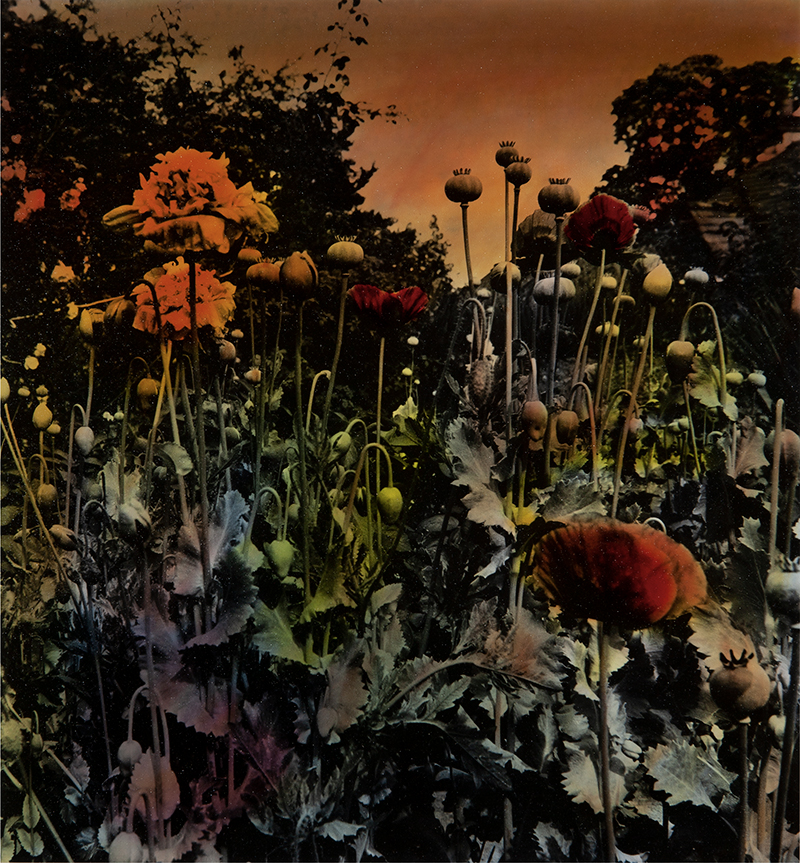PRESS RELEASE

PHOTO LONDON 2025
15-18 May / Somerset House, London WC2
Stand W07, West Wing
At Photo London this year, England &Co present a small cabinet room hosting an eclectic collection of photographs ranging from works in the gallery collection by noted photographers including Bill Brandt and Man Ray, to works by more contemporary artists and photographers, including by those that the gallery represents, or have exhibited in recent years.
Many of these artist/photographers worked initially in the 1970s and 1980s and use photography as a medium for documentation and in relation to their conceptual practice or performance, with photography used to bring material presence to their ephemeral, time-based events and concepts.
The Chinese-born, but later British-based artist, Li Yuan-Chia (1929-1994) is now regarded as China’s first Conceptual artist. He produced a series of lyrical photographs in the last years of his life – many were still life compositions with his sculptures, flowers and stones, and others were images of himself performing shaman-like for his own camera in his garden in Cumbria, with his face obscured or facing away from the viewer. After working for decades in painting, sculpture and installation, Yuan-Chia evolved this late immersion in photography in a highly personal, spiritual way. He hand-coloured and tinted many of his photographs, giving them an otherworldly, strangely timeless quality.
The ‘male gaze’ is explored in works by the British Conceptual artist, James Collins (1939-2021): in his works concerning dialogue-as-portrait, a series of double portraits of male-female encounters, the women who appear in his photographs vary, while all the male images are self-portraits of Collins. London-based artist, David Thorp (b. 1947) and the Swiss artist, Gerald Ducimetière (1940-2022) who moved to the UK, have each used photography to document their conceptual and performance practices in the 1970s; while British photographer, Clay Perry (b. 1940) worked a decade earlier as a documentary photographer for London’s avant-garde in the 1960s. In the decades since, Dafydd Jones‘s ‘society’ photography has become a kaleidoscopic social history.
An England & Co exhibition, Women’s Works: Artists working in 1970s & 80s London, featured works by some of the artists included in the acclaimed Tate touring exhibition, Women in Revolt! Art and Activism in the UK 1970-1990. Among them were influential performance artist, Anne Bean (b. 1950), the late conceptual artist, Susan Hiller (1940-2019) and Feminist artist, Hannah O’Shea (b. 1939). Women’s Works also featured other contemporaneous artists working in London, including Silvia Ziranek (b. 1952), Roberta M Graham (b. 1954), Sue Barnes (1953-2014), Carolyn Gowdy (b. 1954), Rose Boyt (b. 1958), and reflected their varied practices, ideas, and artistic, political and feminist networks.
An an example, Hannah O’Shea’s image of a performer she body-painted with animal markings was used for the cover of feminist magazine Spare Rib in 1977 to illustrate their article, ‘Disturbing Images of Women’. British artist Silvia Ziranek, expressed her feminist concerns about domesticity in works such as ICI VILLA MOI from 1989, where photographs record her performing while holding up a series of small model houses: simultaneously the author, subject and director of her ironic images relating to women and the home.
Italian artist/photographer Elisabetta Catamo (b. 1948) became known in the 1970s and ’80s for her intense, surrealist colour tableaux of juxtaposed objects and body elements. Her images – produced in a pre-digital era – featured in photographic magazines of the era such as ZOOM and influenced advertising photography of that era. Surrealism is also evidenced in the collages of found photographs by Victoria Halford (b. 1966) from the early 2000s.
Jenny Matthews (b. 1948) is a documentary photographer and film maker working on issues of dispossession and human rights with an emphasis on the lives of women and girls: her book, Women and War was published in 2003. Matthews has revisited some of her photographs of women from war-torn countries such as Afghanistan and Sudan, printing the images on linen and embroidering them to reflect her response.
